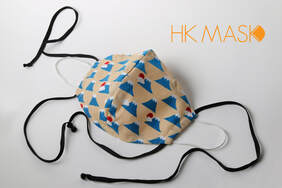|
Today, two-thirds of the U.S. population is sheltering at home in order to slow the spread of the SARS-CoV-2 virus, which causes Coronavirus Disease 2019, better know as COVID-19. Responding to this global pandemic has required a tremendous amount of improvisation to solve urgent problems in health care. Every day, people are improvising home work stations, community support, education, entertainment, and social connection. Improvisation does not mean that one is not prepared, rather, it means using what is at hand. I've been scouring the web to find good resources for making face masks to provide some degree of protection from airborne viral bodies. This guide from Masks of Love WNC has patterns and detailed sewing instructions for two types of masks. Here is a pdf with detailed instructions and photos. (This is from another website with prototype before the WNC site was created.) The pdf includes links to research articles and more patterns. Here is another design, the HK mask by Hong Kong chemist Dr. K. Kwong. This mask seems extra secure with ties as well as ear loops. In addition, this mask is designed to easily insert and replace a filter such as paper towel or tissue, which have surprisingly been shown to increase filtering effectiveness. (Here's a link discussing different materials that can be used for masks and filters.) The HK mask page has patterns, detailed instructions, and video showing how to sew this mask, how to tie it and how to wear it.
Unity Point Health in Cedar Rapids has made a pattern and video instructions available here. I don't see a lot of difference from the Masks of Love pattern. It looks like it might come up higher on the cheek. And if you don't have a printer at home, this site has an image on graph paper so you can draw your own pattern. It also has a video and detailed instructions. Note that the addition of a nose wire comes late in the instruction here, but that's an important element. Improvised construction materials include covered elastic ponytail holders for the ear loops, t-shirts and dish towels for the mask fabric. For the nose wire, people are using prong base fasteners, doubled pipe cleaners (not as strong), jewelry or gardening wire. Why masks?
Wishing you the very best as we improvise our way through.
0 Comments
|
Archives
March 2020
Categories
All
|


